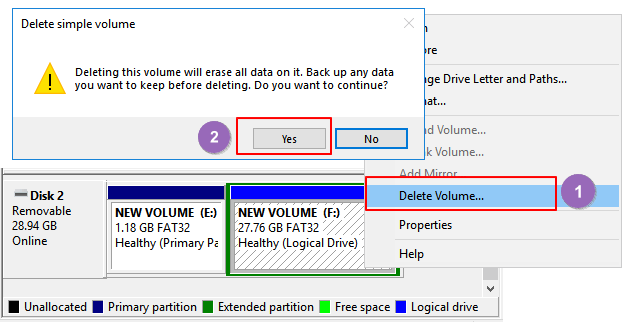

Then, select FAT32 file system (or the file system you need) and click “ OK” to start format. Right click the drive you want to format and select “ Format”.ģ. Press “ Windows + R” at the same time to open the Run box, then type “ diskmgmt.msc” and press “ Enter” key to open the Disk Management.Ģ. To format hard drive, flash drive, or SD card into FAT32, you can use Windows built-in tool to do this operation. Best free FAT32 formatter for Windows 10, 8, 7, and 11 If the partition capacity of your hard drive, flash drive or SD card is larger than 32GB or the maximum file size of a single file is larger than 4GB, you may face that Windows built-in tool cannot format your drive to FAT32 successfully.īesides, if your hard drive, flash drive or SD card is write protected, you cannot format it successfully too. Windows cannot format hard drive into FAT32? Why? Here, you need to understand the FAT32 file system at first.įAT32 is a kind of file system suitable for small capacity hard disk, it designed to overcome the 2GB partition limit with the FAT system and the maximum file size of a single file it supports is 4GB.

How can I format this drive as FAT32? Is there any suggestion?” Why cannot format hard drive into FAT32 in Windows 10? You can back to another drive, or use a cloud storage service like, Google Drive, iCloud, OneDrive, or Dropbox.I want to format a hard drive to FAT32, but Windows 10 Disk Management tool failed to do this job. Because formatting the drive will delete all of your data, make a backup of anything you want to keep.If you have specific instructions to use FAT32 and your drive is larger than 2GB, you'll need a third-party tool to format it as FAT32-continue with this method.If your drive is larger than 2TB and you just want to use it to share files between multiple modern operating systems (Windows 8 and later, macOS X 10.6.6 and later), use this method instead, and be sure to select exFAT as the file system type.If your drive is larger or you need to work with big files, it's better to use exFAT, which has almost identical compatibility. The main difference is that you can't work with files larger than 4GB on FAT32, nor can it work with drives larger than 2TB. ExFAT, the successor to FAT32, also works on Windows, macOS, Linux, and other devices.


 0 kommentar(er)
0 kommentar(er)
